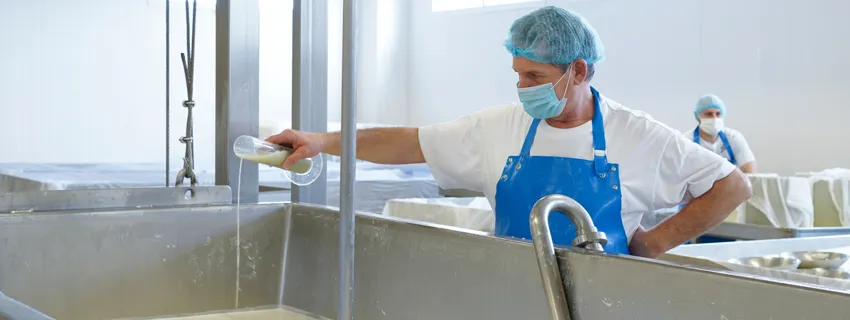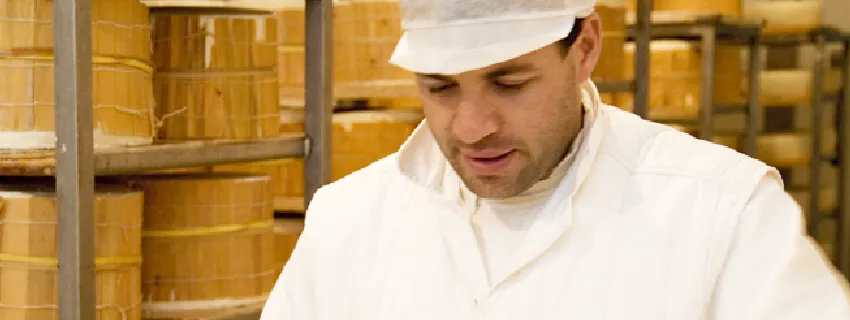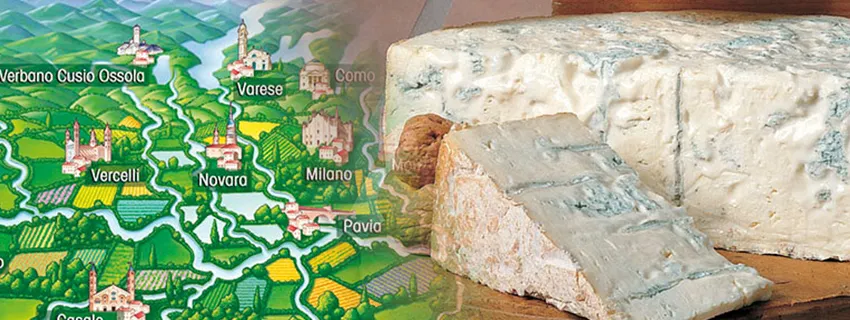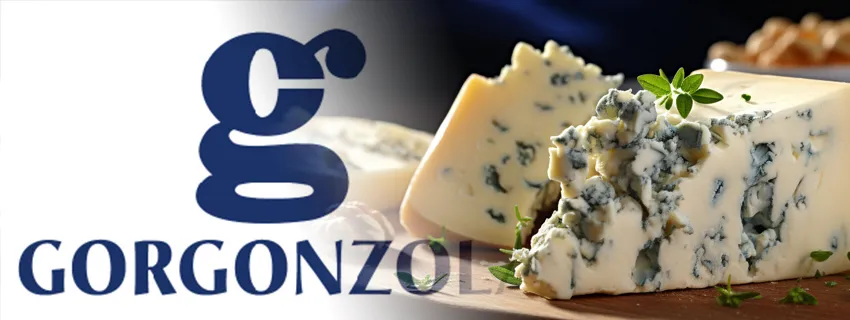Published:
Author: Antonio Maria Guerra
How Is Gorgonzola Made?

How is Gorgonzola made? In this article we will find out how the most famous Italian blue cheese is produced. An ancient procedure, handed down from generation to generation and used still today by the most traditional producers of this speciality. Master cheesemakers, true artisans of taste, gathered in the Consortium for the Protection of Gorgonzola Cheese. Enjoy the reading!

How is Gorgonzola made?
Here follows a list of the steps for the production of Gorgonzola cheese (click here for the printable version):

01. Fresh whole cow’s milk, as soon as arrives at the dairy, is pasteurized and poured into special tanks.

02. Rennet, lactic ferments and spores of penicillium glaucum (a particular type of mushroom), are added to the milk (*1). The ‘curd’ is formed.

03. After about twenty minutes, the curd is cut (*2). Its serum is purged using a special inclined plane with drainage holes.

04. The curd is poured in special molds (in Italian ‘fassiroli’ or ‘fascere’): these are turned by hand. At the end of this step, the dairy id number is stamped on each wheel.

05. The wheels are moved in a special cellar (known as the ‘purgatory’), where they rest at a temperature of 18°/24°C.

06. Inside the same cellar, the wheels are uniformly sprinkled with salt (‘salting’).

07. The wheels mature for about three weeks in cold rooms at a temperature of 2°/7°C, with a humidity of 85/99%.

08. The wheels are punctured: this facilitates the entry of air, leading to the formation of edible molds, from which come the famous green/blue streaks inside the pasta.
Once the seasoning is complete, the wheels are cut into portions: these are wrapped in aluminum foils bearing the logo of the Consortium of Gorgonzola cheese: a large G.
The id number of the cheese factory and the Consortium’s trademarks are distinctive elements of the original Gorgonzola DOP.
Notes:
*1: The preparation method for spicy Gorgonzola differs from that used for the sweet in the use of a different type of penicillium and in a longer seasoning.
*2: Gorgonzola is a ‘raw cheese’ because the curd used for its preparation is not heated (look at step 03).
Let’s find out the fascinating origins of Gorgonzola cheese, as well as a large number of information and interesting facts. To read the article, please click on this LINK.
How is Gorgonzola made? Printable infographic.
Click HERE to view (and, eventually, download) a printable infographic showing the steps necessary to produce Pecorino Romano cheese.
Gorgonzola: the preparation in video.

The wheel of Gorgonzola cheese.
The wheel has an approximate weight of 12 kilos.
Read more
The internal part of the sweet type is creamy, whereas the spicy one is harder and almost friable. Both of them have the typical blue/green streaks. The original product is easily recognizable thanks to the foil wrapping the cheese, bearing a great G, the logo of the Consortium for the Protection of Gorgonzola Cheese.
The 'Consorzio'.
The denomination ‘Gorzonzola’ was instituted by decree on 30 October 1955: this formal act represented, de facto, the official recognition of a specialty of very ancient origins. The association of dairies known as the ‘Consortium for the Protection of Gorgonzola Cheese’ was founded in Novara in 1970 (*1),
Read more
with the task of promoting the product and defending it from the imitation attempts.
In 1996 the European Union included Gorgonzola in the list of PDO (Protected Designation of Origin).

The ancient production method.
The most ancient method to produce Gorgonzola, nowadays no longer used, requires the ‘curd’ to be prepared in the evening and left to drain all night, allowing its contact with the spores needed for the formation of edible molds (the same molds giving the green/blue color to the cheese). The next morning, this curd is poured into forms, alternating it with layers of fresh curd. The rest of the process involves the salting, the drilling (*1) and, finally, the seasoning.
Note:
*1: Drilling the cheese allows air to enter its paste: this air, in contact with the spores, leads to the formation of molds.

Consorzio per la Tutela del Formaggio Gorgonzola: contacts.
Address: Via Andrea Costa, 5/c
28100 Novara
Official website: www.gorgonzola.com
Mail: info@gorgonzola.com
Tel.: +39 0321 626613
Copyright information.
The images displayed in this page belong to WebFoodCulture and to the Consorzio per la Tutela del Formaggio Gorgonzola.



